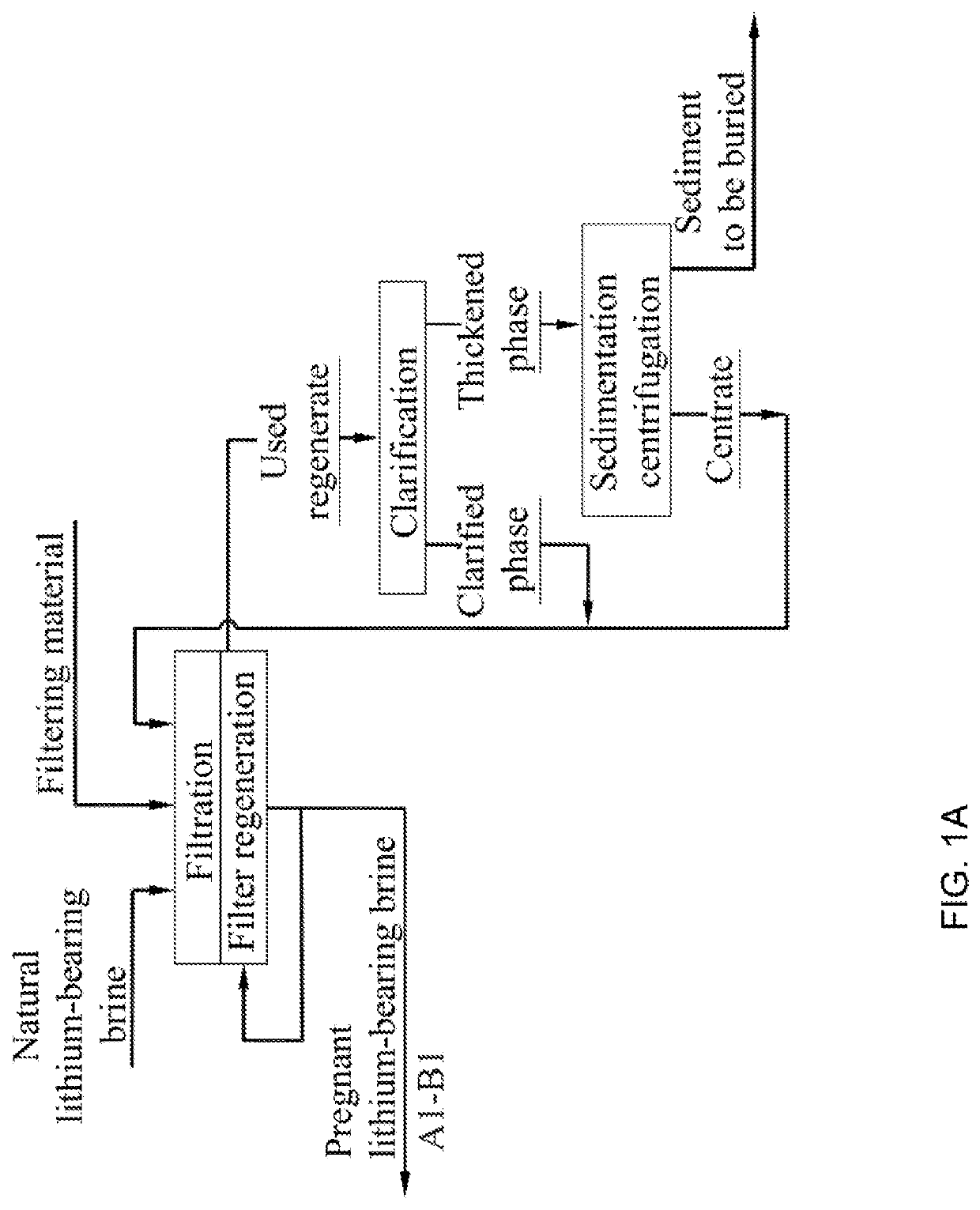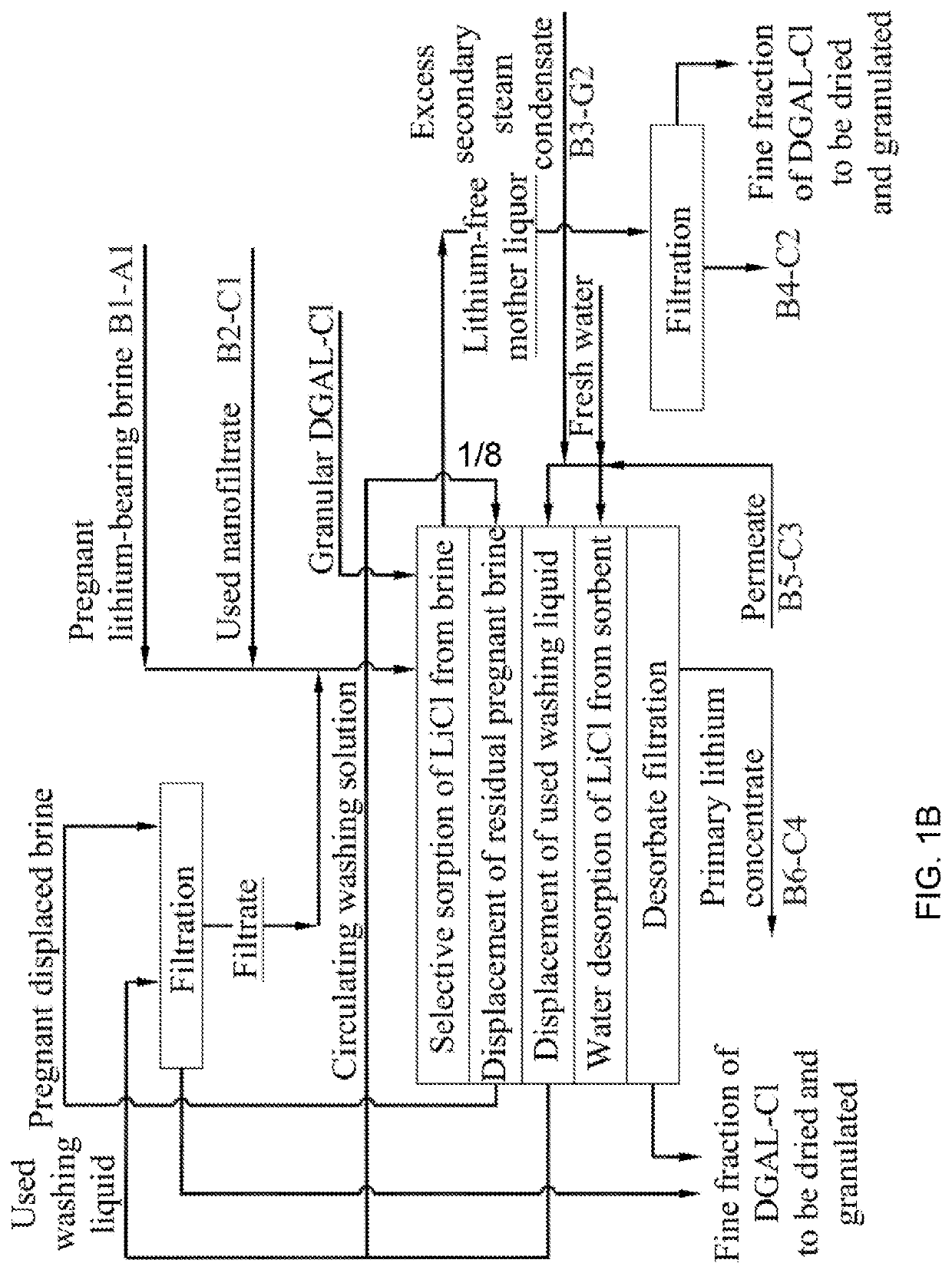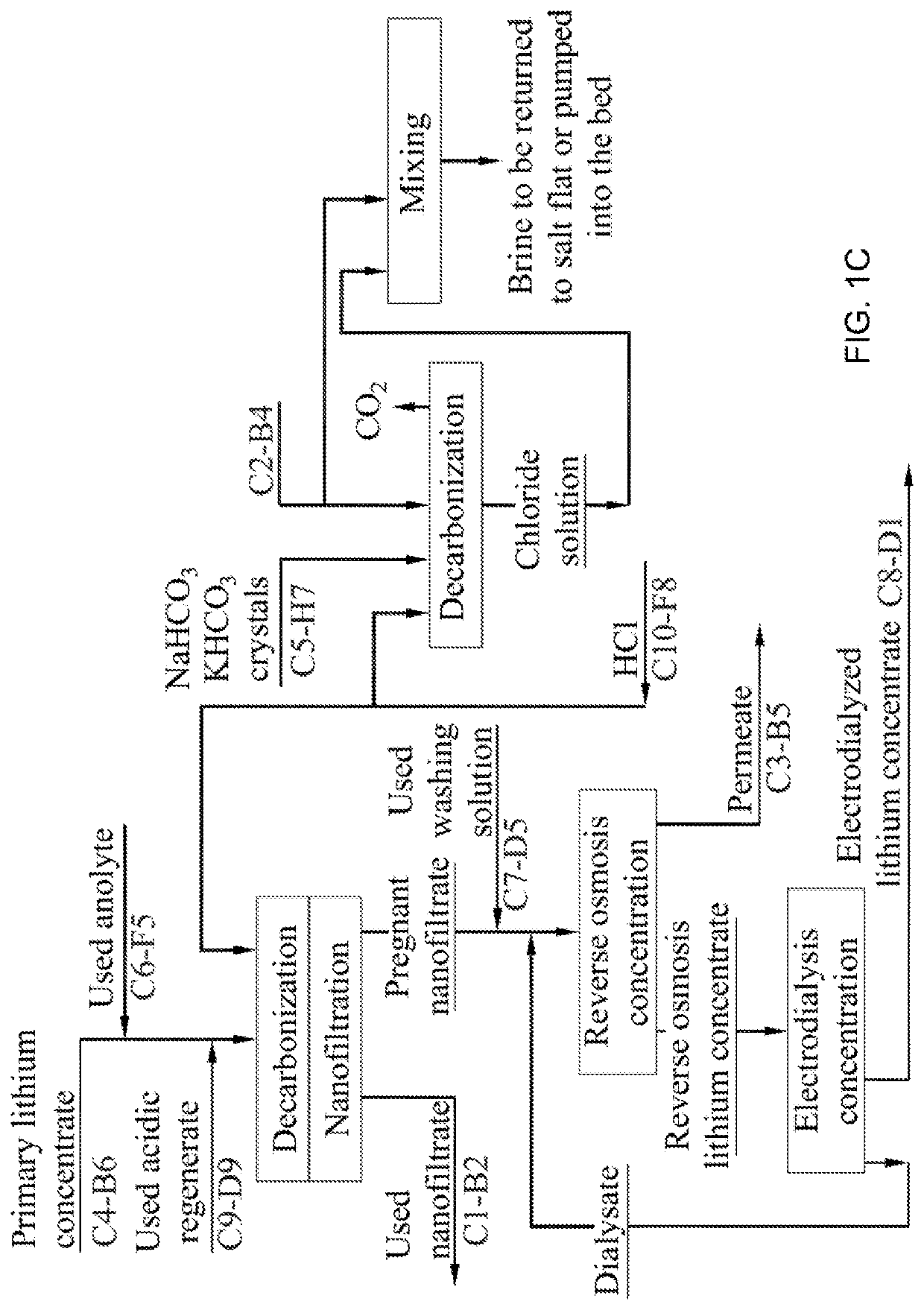Method for producing lithium hydroxide monohydrate from brines
a lithium hydroxide monohydrate and brine technology, applied in the field of lithium hydroxide metalurgical field, can solve the problems of high power consumption, multiple stages of lithium chloride solution subjected to electrolysis, high consumption of reagents and large volumes of solid waste, etc., and achieve the effect of expanding the range of lithium-bearing hydromineral raw materials and reducing the risk of sorption separation
- Summary
- Abstract
- Description
- Claims
- Application Information
AI Technical Summary
Benefits of technology
Problems solved by technology
Method used
Image
Examples
Embodiment Construction
. An industrial testing apparatus for sorption extraction of a primary lithium concentrate used thereafter for lithium hydroxide monohydrate production from a natural lithium-bearing multicomponent brine with total mineralization of 486 kg / m3 and LiCl content of 1.18 kg / m3 was used to carry out comparative tests of sorption-desorption modules (SDM) consisting of two columns filled with granular DGAL-Cl sorbent per module, with a mass content of 8.15 tons of sorbent in each column. During the tests, SDM 1 (prior art) worked on the original unfiltered lake brine. SDM 2 worked on a similar lake brine previously subjected to a filtering process according to the disclosed method. During the tests, the hydraulic resistance of the module columns and the specific productivity of 1 ton of loaded sorbent were monitored in terms of the resulting LiOH.H2O product. During the tests, the hydraulic resistance of the SDK 1 columns increased from the initial value of 0.6 atm to the critical value of...
PUM
| Property | Measurement | Unit |
|---|---|---|
| concentration | aaaaa | aaaaa |
| concentration | aaaaa | aaaaa |
| concentration | aaaaa | aaaaa |
Abstract
Description
Claims
Application Information
 Login to View More
Login to View More - R&D
- Intellectual Property
- Life Sciences
- Materials
- Tech Scout
- Unparalleled Data Quality
- Higher Quality Content
- 60% Fewer Hallucinations
Browse by: Latest US Patents, China's latest patents, Technical Efficacy Thesaurus, Application Domain, Technology Topic, Popular Technical Reports.
© 2025 PatSnap. All rights reserved.Legal|Privacy policy|Modern Slavery Act Transparency Statement|Sitemap|About US| Contact US: help@patsnap.com



